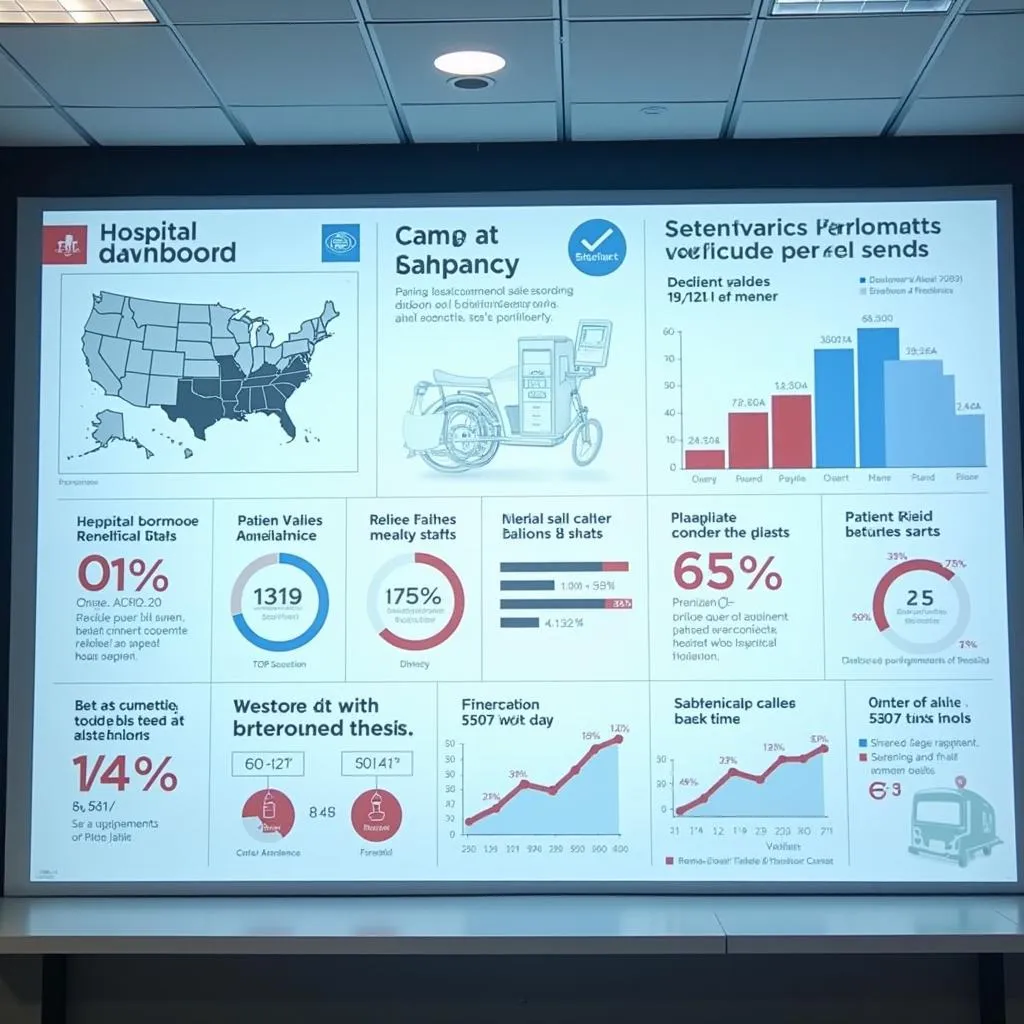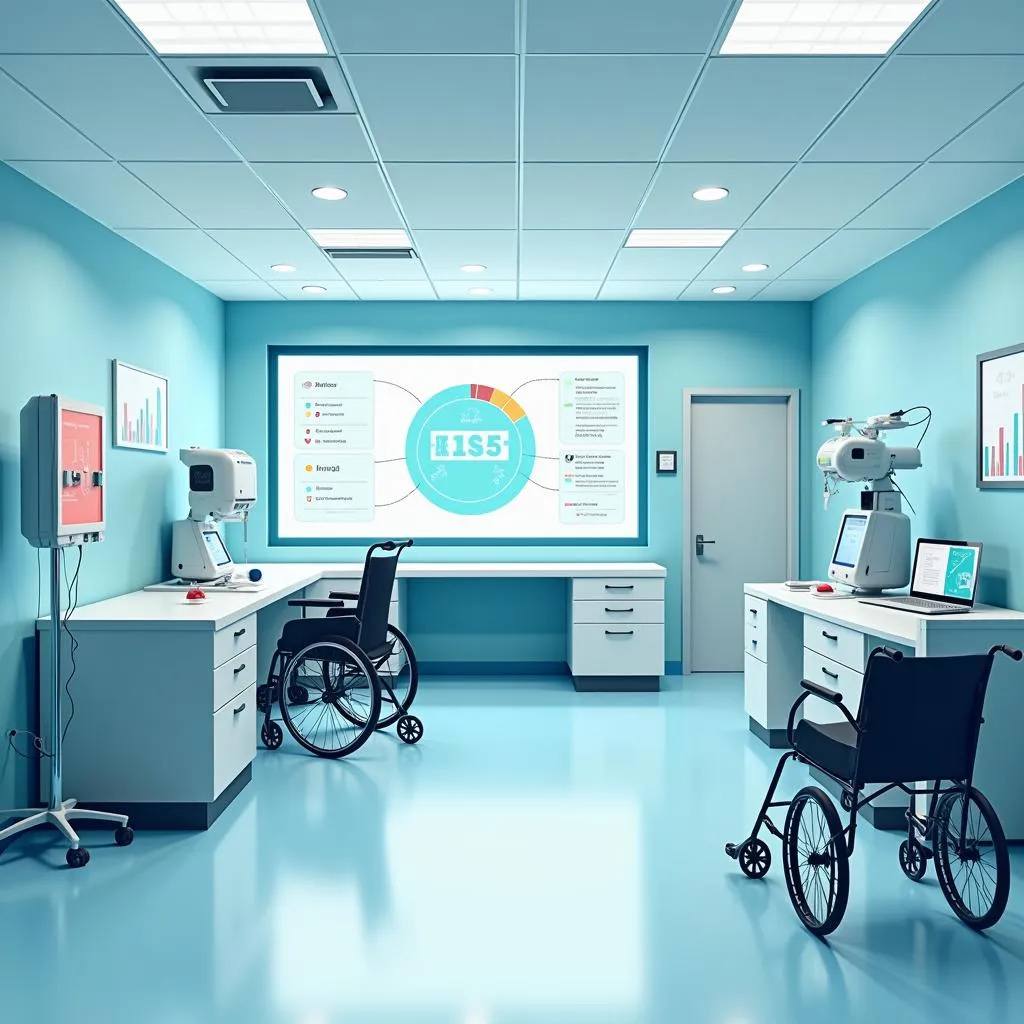Hospital Rtls, or Real-Time Location System, is rapidly changing the healthcare landscape by providing real-time visibility into the location and status of medical equipment, staff, and even patients within a hospital setting. This technology utilizes tags that emit signals, allowing hospitals to optimize workflows, improve patient safety, and enhance operational efficiency.
![]() Hospital RTLS Tracking System in Action
Hospital RTLS Tracking System in Action
The Power of Visibility: Understanding Hospital RTLS Applications
Hospital RTLS goes beyond simple asset tracking, offering a wide range of applications that directly impact patient care and hospital operations. Some key benefits include:
- Enhanced Asset Management: RTLS allows hospitals to track the location and usage of critical equipment, minimizing downtime and reducing rental costs by optimizing utilization.
- Streamlined Workflow Efficiency: By tracking the movement of staff and equipment, hospitals can identify and eliminate bottlenecks, leading to faster patient throughput and improved staff productivity.
- Improved Patient Safety: RTLS plays a crucial role in patient safety by ensuring the availability of necessary equipment during emergencies, tracking hand hygiene compliance, and even preventing infant abductions.
- Enhanced Patient Experience: With real-time location data, wait times can be reduced, and patients can be provided with more accurate updates, leading to greater satisfaction.
![]() Real-Time Patient Tracking with RTLS
Real-Time Patient Tracking with RTLS
Choosing the Right RTLS Solution: Factors to Consider
Implementing a successful Hospital RTLS system requires careful consideration of various factors:
- Technology: Different RTLS technologies are available, each with its own strengths and weaknesses. Hospitals must choose the technology that best suits their needs and infrastructure.
- Scalability: The chosen RTLS solution should be scalable to accommodate the hospital’s future growth and evolving needs.
- Integration: Seamless integration with existing hospital systems, such as Electronic Health Records (EHR) and Nurse Call systems, is vital for maximizing the benefits of RTLS.
- Cost: Hospitals need to consider the total cost of ownership, including hardware, software, installation, and maintenance, when evaluating different RTLS solutions.
The Future of Healthcare: RTLS as a Catalyst for Innovation
As technology continues to advance, Hospital RTLS is poised to play an even greater role in shaping the future of healthcare. Emerging applications, such as:
- Predictive Analytics: By analyzing historical data, RTLS can help hospitals predict future equipment needs, optimize staff scheduling, and proactively address potential bottlenecks.
- Remote Patient Monitoring: Integrating RTLS with wearable technology allows for continuous monitoring of patients’ vital signs and location, enabling proactive interventions and reducing hospital readmissions.
- Smart Room Technology: RTLS can be integrated with smart room technology to automate tasks, such as adjusting lighting and temperature based on patient presence and preferences, further enhancing patient comfort and safety.
 Advanced Hospital Dashboard Displaying RTLS Data
Advanced Hospital Dashboard Displaying RTLS Data
Conclusion: Embracing RTLS for a More Efficient and Patient-Centric Future
Hospital RTLS is not just a technological advancement but a transformative force in healthcare. By embracing this technology, hospitals can unlock significant improvements in operational efficiency, patient safety, and overall care delivery. As the healthcare landscape continues to evolve, Hospital RTLS will undoubtedly play a pivotal role in shaping a more efficient, patient-centric, and technologically advanced future for healthcare institutions worldwide.
FAQs
1. What is the typical range of an RTLS tag in a hospital environment?
The range of an RTLS tag depends on the chosen technology and environmental factors. However, most systems offer a range of up to 300 feet indoors.
2. Is RTLS data secure and HIPAA compliant?
Yes, reputable RTLS solutions prioritize data security and comply with HIPAA regulations, ensuring the privacy and security of patient information.
3. Can RTLS be integrated with existing hospital Wi-Fi networks?
Some RTLS technologies can leverage existing Wi-Fi networks, while others require dedicated infrastructure. The choice depends on the specific RTLS solution and the hospital’s existing infrastructure.
4. How long does it take to implement a Hospital RTLS solution?
Implementation timelines vary depending on the scale of the project and the complexity of the hospital environment. However, most implementations can be completed within a few months.
5. What is the expected return on investment (ROI) for a Hospital RTLS system?
Hospitals can realize a significant ROI through improved asset utilization, reduced rental costs, increased staff productivity, and enhanced patient safety.
For any inquiries regarding our services or to schedule a consultation, please contact us at Phone Number: 02437655121, Email: [email protected], or visit us at Address: No. 298 Cau Dien Street, Minh Khai, Bac Tu Liem, Hanoi, Vietnam. Our dedicated customer support team is available 24/7 to assist you.
For more information on how San Jose Hospital is utilizing cutting-edge technology to provide exceptional patient care, explore our website’s dedicated technology section.
